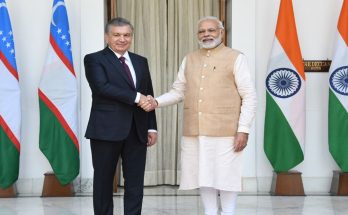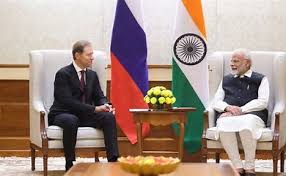India’s gross domestic product (GDP) is expected to grow at 7.4% in the fiscal 2016-17, slightly below the estimate of 7.6% this year, Asian Development Bank (ADB) said. In the next fiscal the growth is expected to reach 7.8%., ADB said it its annual economic publication Asian Development Outlook. India is one of the fastest growing large economies in the world and will likely remain so in the near term, said Shang-Jin Wei, ADBs Chief Economist. The potential growth of the country can be raised further if it can successfully implement necessary reforms including unifying the tax regime, improving labor market regulations, as opening further to foreign direct investment and trade, he added. According to India’s Finance Ministry’s estimates, growth is likely to be between 7-7.75 per cent next fiscal year. The ADBs growth forecast of 7.4 per cent for 2016-17 is substantially lower than its earlier projection of 7.8 per cent.
In the current fiscal year, weak global economy will continue to weigh on exports, particularly Indias refined petroleum products, offsetting a further pickup in domestic consumption, due in part to an impending salary hike for government employees. Public investment is likely to remain strong as the government taps savings from lower oil costs to boost spending. In FY2017, strengthened public banks and corporate deleveraging will result in an uptick in bank credit and boost private spending, including on infrastructure.
After 2 years of decline, consumer inflation is likely to accelerate, fueled by the salary hike for civil servants and a mild pickup in global oil prices, with inflation expected to average 5.4% in the current fiscal, rising to 5.8% in next year, ADB said in its report. The government is expected to maintain its ongoing fiscal consolidation efforts, with the deficit cut to 3.5% of GDP in FY2016, supported by tax revenue growth and asset sales. At the same time, given stresses on the rural economy following two consecutive weak monsoons, the government will step up social sector spending in its FY2016 budget and increase allocations for road, power, and rail infrastructure.
On the ground, India is facing stiff challenges to finance the infrastructure it needs to deliver sustainable growth, with funding requirements estimated at around $200 billion a year. Public sector banks non-performing assets and an overleveraged corporate sector leave limited scope for more private investment in infrastructure and highlight the need for policy actions, the report says.
However, the government has taken a number of positive steps including putting in place a programme to recapitalise public sector banks and to strengthen their governance, and introducing a bankruptcy bill in parliament that will result in improved quality and speed of debt restructuring. To support the private sector, and unlock more investment, the government has set up a National Infrastructure Investment Fund, introduced tax-free infrastructure bonds, and put in place a mechanism to resolve problems in troubled public-private partnerships.
In 2015, there was a pickup in manufacturing, private consumption, and capital expenditure by the government helped offset a double-digit decline in exports. Imports contracted largely due to a sharply lower oil bill, while inflation remained broadly subdued on the back of lower global commodity prices, although there was a pickup in food prices in the second half. Measures to encourage more foreign direct investment resulted in a dramatic surge in investment. Ongoing efforts to curb spending and increased tax revenues saw the government achieve its budget deficit reduction target.
ADB said that potential interest rate hikes by the US Federal Reserve, combined with broader weakness of emerging markets, signal that risks to Asia’s growth forecast remain “tilted to the downside”. “Heightened investor risk aversion, intensified global financial market volatility and a sharper-than-forecast growth slowdown in China would further weaken the global outlook and directly hurt regional exports and growth,” the multilateral lender said.
Author Profile
- India Writes Network (www.indiawrites.org) is an emerging think tank and a media-publishing company focused on international affairs & the India Story. Centre for Global India Insights is the research arm of India Writes Network. To subscribe to India and the World, write to editor@indiawrites.org. A venture of TGII Media Private Limited, a leading media, publishing and consultancy company, IWN has carved a niche for balanced and exhaustive reporting and analysis of international affairs. Eminent personalities, politicians, diplomats, authors, strategy gurus and news-makers have contributed to India Writes Network, as also “India and the World,” a magazine focused on global affairs.
Latest entries
 DiplomacyOctober 4, 2025UNGA Resolution 2758 Must Not Be Distorted, One-China Principle Brooks No Challenge
DiplomacyOctober 4, 2025UNGA Resolution 2758 Must Not Be Distorted, One-China Principle Brooks No Challenge India and the WorldJuly 26, 2025MPs, diplomats laud Operation Sindoor, call for national unity to combat Pakistan-sponsored terror
India and the WorldJuly 26, 2025MPs, diplomats laud Operation Sindoor, call for national unity to combat Pakistan-sponsored terror India and the WorldJuly 25, 2025When Fire Ends, Diplomacy Begins
India and the WorldJuly 25, 2025When Fire Ends, Diplomacy Begins India and the WorldJuly 16, 2025Operation Sindoor and its Aftermath: India’s Successful Diplomatic Outreach
India and the WorldJuly 16, 2025Operation Sindoor and its Aftermath: India’s Successful Diplomatic Outreach








